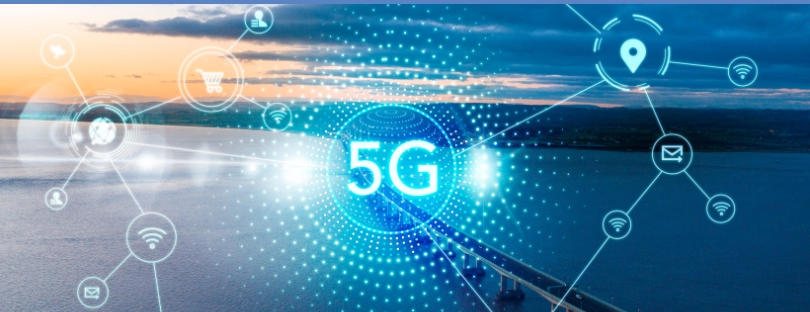
5G Device Ecosystem: Expanding Connectivity and Innovation
As the world embraces the transformative potential of 5G technology, the ecosystem of 5G devices is evolving rapidly, creating new opportunities for industries, enhancing connectivity, and enabling groundbreaking applications. The 5G device ecosystem encompasses a vast array of devices, from smartphones to IoT devices and industrial equipment, all optimized to leverage the unique capabilities of 5G networks.
In this article, we delve into the critical components of this ecosystem, explore the trends shaping its future, and examine the implications of 5G devices across various sectors.
The Foundation of the 5G Device Ecosystem
At the heart of the 5G device ecosystem lies an interconnected network of devices, infrastructure, and applications, all optimized to take advantage of the speed, low latency, and massive data capacity of 5G networks. This ecosystem is anchored by advanced 5G smartphones, IoT-enabled devices, smart cities infrastructure, and autonomous vehicles. Each component, from hardware manufacturers to network providers, plays a crucial role in ensuring that the ecosystem can support new applications and address the rising demand for high-speed, real-time connectivity.
5G Smartphones: Leading the Consumer Market
The 5G device market has seen explosive growth, especially in the realm of consumer electronics, where 5G smartphones are now ubiquitous. Driven by demand for faster downloads, improved streaming quality, and smoother connectivity, the rollout of 5G-enabled phones from major brands like Apple, Samsung, and Huawei has redefined user expectations.
Consumers benefit from seamless video calls, high-quality streaming, and immersive gaming experiences. Augmented reality (AR) and virtual reality (VR) applications also benefit from 5G’s low latency and high throughput, which reduce lag and improve real-time responsiveness.
Wearables in the 5G Era
Wearable technology, including smartwatches, fitness trackers, and even smart glasses, is experiencing a significant evolution with 5G integration. Enhanced connectivity allows these devices to function independently, reducing reliance on tethered smartphones. This independence enables real-time health monitoring, advanced fitness tracking, and AR features on wearable devices, which open up possibilities in healthcare, sports, and entertainment.
IoT and 5G-Enabled Smart Cities
One of the most revolutionary impacts of 5G devices is the expansion of the Internet of Things (IoT), particularly within smart cities. By connecting IoT devices, from traffic lights to waste management sensors, 5G enables municipalities to collect and analyze data at an unprecedented scale, optimizing resources and improving urban life. With sensors placed throughout infrastructure, cities can address energy usage, air quality monitoring, and traffic management with real-time insights that directly enhance residents’ quality of life.
Industrial IoT and the Rise of 5G Device Use in Manufacturing
In industrial settings, 5G-powered IoT devices are instrumental in advancing Industry 4.0 and smart manufacturing. Industrial IoT applications supported by 5G devices enhance automation, enable predictive maintenance, and allow for seamless communication between machines, leading to reduced downtime and increased productivity. Key examples of 5G applications in the industry include real-time monitoring, which helps detect equipment malfunctions, and robotic automation in manufacturing processes, which allows for precision and efficiency previously unattainable with slower networks.
Autonomous Vehicles and 5G Device Integration
5G-enabled autonomous vehicles rely heavily on low-latency communication to operate safely and efficiently. 5G allows these vehicles to communicate with traffic infrastructure, other vehicles, and even pedestrians in real time, ensuring safe navigation. By enabling faster decision-making capabilities, 5G enhances autonomous driving, which is critical to realizing the future of smart transportation.
Healthcare: Transforming Patient Care with 5G Devices
5G devices in healthcare are transforming patient care through connected medical devices, telemedicine, and remote surgeries. With real-time data transmission, healthcare providers can monitor patients remotely, allowing for continuous health tracking and early detection of potential issues. In surgical settings, 5G devices facilitate remote surgeries, where specialists can operate on patients from a distance using robotic instruments connected to high-speed 5G networks. This technology expands access to quality healthcare and optimizes treatment outcomes, especially in remote or underserved areas.
Network Infrastructure: Enabling the 5G Device Ecosystem
While 5G devices are critical to the ecosystem, they depend on robust network infrastructure. The rollout of 5G infrastructure by major telecommunications providers involves the deployment of small cell technology, millimeter-wave technology, and network slicing, all designed to optimize network performance for 5G devices. This infrastructure not only increases connectivity but also enables specialized services for specific industries, such as high-priority channels for emergency response systems and low-latency channels for mission-critical industrial applications.
Edge Computing: Pushing Processing Closer to the Source
Edge computing is another vital component of the 5G device ecosystem. By processing data closer to the source, such as in local data centers or on-device computing for IoT applications, edge computing reduces latency and enhances the speed of data transfer. For industries like gaming, autonomous driving, and AR/VR applications, where milliseconds matter, edge computing allows 5G devices to function seamlessly without lag.
Security in the 5G Device Ecosystem
The expansion of the 5G device ecosystem necessitates rigorous security measures. With billions of connected devices, the potential for cyber threats increases. 5G networks, therefore, incorporate enhanced encryption, network segmentation, and stringent authentication processes to protect against data breaches and ensure that device-to-device communication is secure. Network slicing, a unique feature of 5G, provides an additional layer of security by isolating specific segments of the network for individual applications or services, enhancing data integrity and security.
Future Trends in the 5G Device Ecosystem
The 5G device ecosystem is still in its infancy, but its growth trajectory suggests transformative changes across sectors. Future trends include the integration of artificial intelligence (AI) in 5G devices for predictive analytics, increased adoption of smart home devices, and a broader application of 5G IoT in agriculture and logistics. As 5G matures, the ecosystem will expand to support the next generation of devices, driving further advancements in smart cities, connected healthcare, and autonomous vehicles.
5G-Enabled Consumer Devices and the Growth of AR/VR
The introduction of more 5G-enabled consumer devices will catalyze growth in AR and VR applications, transforming entertainment, education, and remote collaboration. With the speed and bandwidth of 5G, consumers can enjoy AR-enhanced shopping experiences, immersive gaming, and virtual tourism, where users can experience far-off destinations in real time through VR.
Agriculture and the Role of 5G Devices
In agriculture, 5G devices support precision farming techniques by enabling real-time monitoring of soil conditions, crop health, and equipment status. This data allows farmers to make informed decisions, optimize resources, and increase crop yields. 5G-powered drones, for instance, can perform aerial surveys of large agricultural areas, reducing the need for manual inspections and accelerating data collection processes.
Conclusion: The Transformative Potential of the 5G Device Ecosystem
The evolution of the 5G device ecosystem marks a new era of connectivity, where devices across every industry communicate seamlessly and support innovative applications. From enabling autonomous vehicles to transforming healthcare and empowering smart cities, 5G devices are reshaping our world. As this ecosystem expands, it promises not only to enhance existing technologies but to inspire the creation of new ones, driving progress and delivering immense value across the globe.











